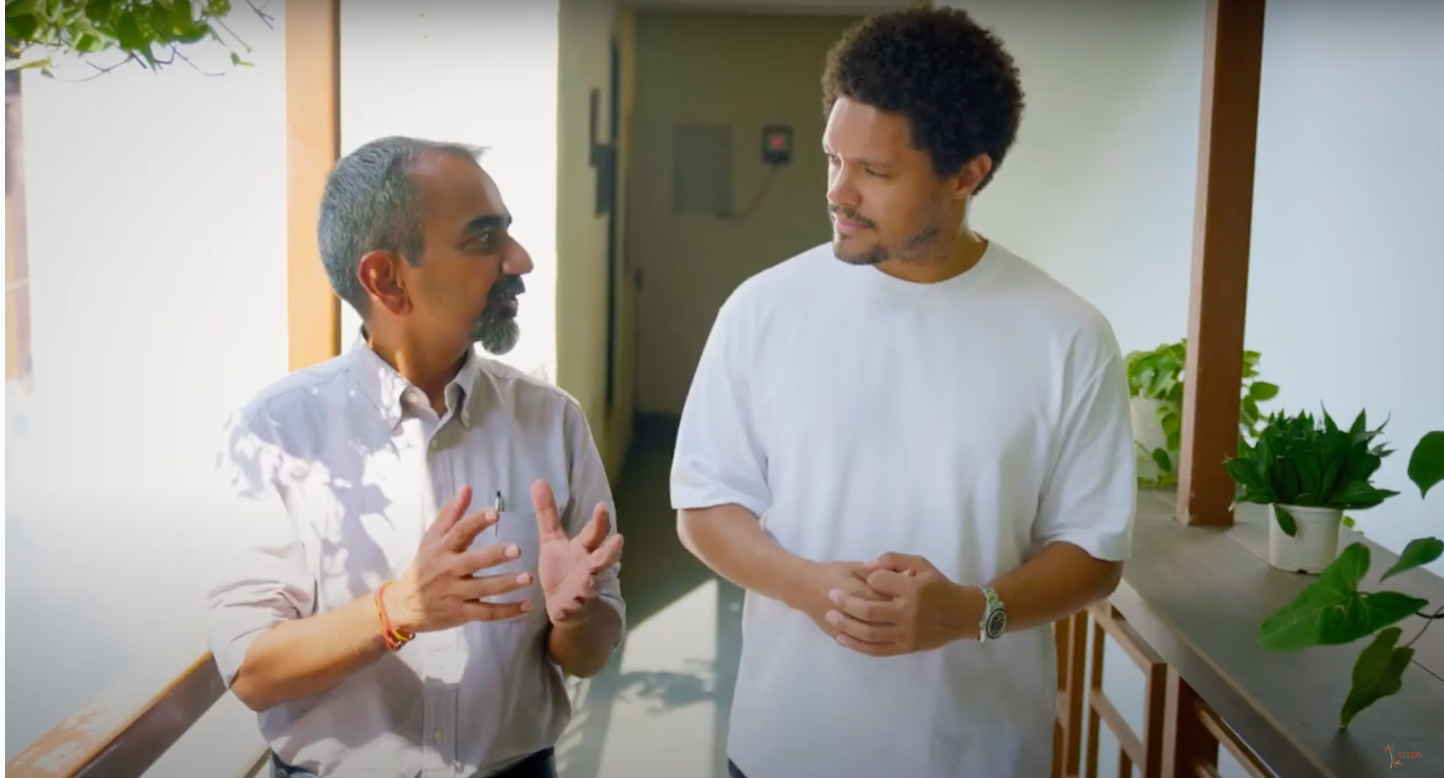
Every roof is a unique fingerprint, SEEDS and Trevor Noah in ThePrompt!
How AI is impacting Disaster Risk Management | UNICEF Talks Podcast
Context
IPCC code red has repeatedly prompted governments at international, national and state levels to urgently develop climate change adaptation and mitigation pathways, making it an important aspect of the current development discourses. There is also an ominous agreement between the world leaders that financing for climate change must be substantially increased. While the science, investment, and economy develop on one side, the conversion of these facts, resources, and voices into context-specific solutions at scale continues to be challenging. In urban areas, this gap is starker. Urban areas harbour a multitude of complexities in terms of livelihoods, populations, inequalities, and governance, thus making it tricky to detect and understand climate-induced disaster risks. Deciphering risks is also complex, with the current hazard warnings as they generalise information for complete districts or cities at best. Thus, leaving neighbourhoods with little information about their specific vulnerabilities needed to adapt to the amplifying risks, making informed pre-emptive action by individuals/local communities almost impossible.
Need
There is a need to collate hazard risk information at a hyper-local level to get clarity on the driving factors of risk being a culmination of hazard, vulnerability, and exposure. Its experience varies with the coping capacity of the family, structural strength of the building and other factors such as slope, elevation and built-up density of the neighbourhood. The available risk information should not only be localised, but needs to be made easily decipherable for at-risk communities and other actors involved in disaster response and planning.
Our Solution
As technology grows rapidly with the advancement in artificial intelligence (AI), it becomes much more feasible to leverage tech-based tools to understand, identify, and assess the vulnerabilities and risks of communities. Our AI model does just that: it uses the roof of any building as a pixel to establish its risk score. With a framework of parameters and weightages through extensive risk analysis techniques, risk assessment models are developed that can utilise satellite imagery to identify the risk score of buildings prone to cyclones, floods, heatwaves, and earthquakes. This information is crucial in identifying and prioritising the households in informal/ marginalised communities for awareness, preparedness, and interventions.
Impact
The model was piloted for risk assessment of cyclone-induced flooding during cyclone Nivar and cyclone Burevi in 2020 and showcased promising results. In 2021, we scaled the dissemination to reach out to over 50,000 families vulnerable to heatwaves (Delhi and Nagpur), cyclones (parts of Odisha and Gujarat) and monsoon flooding (Puri and Mumbai). During cyclone Yaas, we deployed the model for coastal parts of Puri and shared advisories and pre-emptive measures with over a thousand vulnerable families, helping reduce their losses. The model has been refined and deployed to several locales and communities for heat waves, excessive rainfall, and flooding in Delhi, Gujarat, and Bihar. Through 2024 and 2025, the model has been deployed in the cities of Chennai, Gaya, Bhubaneswar, Gangtok, Dehradun, and Bhopal, and it is targeted to reach out to at least 1,00,000 families.
Way forward
As the model continues to evolve, the deployment will be scaled for multiple cities nationwide. Our collaborations with governments ensure that this risk assessment is available as an open-source information tool for accessible risk assessment and mitigation. Our vision for the model is to use it for climate change adaptation and disaster management in a way that the hyper-local risk of the communities is understood and pathways for their protection and resilience are put into practice.
Selected coverage on the project:
- SunnyLives AI: Transforming Disaster Preparedness with Hyper-Local Insights
- National Pollution Control Day: How Pollution Impacts Daily Life in India
- How AI is impacting Disaster Risk Management | UNICEF Talks Podcast | Ep. 12
- Policies and People | How AI is helping India’s poor become climate-resilient
- Disaster management expert Anshu Sharma: ‘For us the rooftop is a hidden labelled data set’
- Microsoft AI for Humanitarian Action grant: SEEDS India
- How AI is being used to protect people from cyclones | Times of India
- Microsoft along with SEEDS launch 2nd phase of AI model to predict heat waves risks in India | The Hindu
- Can AI-Based Solutions Help Mitigate the Climate Change Crisis? | NDTV Gadgets
- SEEDS is using Microsoft AI to make climate change threats visible for the most vulnerable
